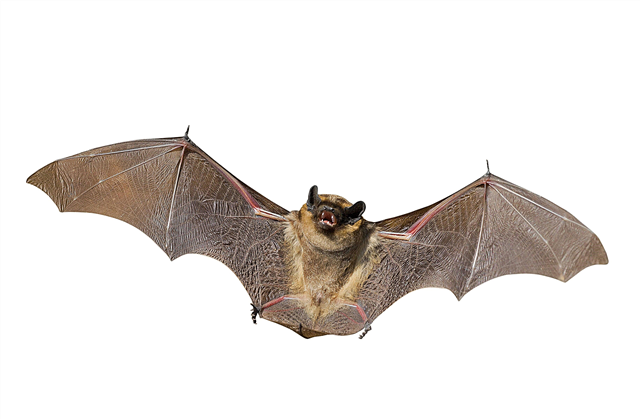
Everyone is familiar with atmospheric pressure, at least thanks to physics lessons and weather forecasts. In addition, the nuances of the effect of pressure on a person are of interest.
What is atmospheric pressure?
Atmosphere pressure - this is the pressure of the gas shell of our planet, the atmosphere, which acts on all the objects in it, as well as the earth's surface. Pressure corresponds to the force that acts in the atmosphere per unit area.

In simpler terms, this is the force with which the air around us acts on the surface of the earth and objects. By tracking changes in atmospheric pressure, weather conditions can be predicted in conjunction with other factors.
Why and why is atmospheric pressure created?
Specialists studying the Earth’s atmosphere and various meteorological phenomena carefully monitor how the air masses move. This is the main factor affecting the climatic conditions of a particular area. These observations made it possible to understand why atmospheric pressure occurs.
Gravity is to blame. Through many experiments, it was proved that the air is by no means weightless. It consists of various gases that have a certain weight. Thus, the force of gravity of the Earth acts on air, which contributes to the formation of pressure.
Interesting fact: all the air on the planet (or the entire atmosphere of the Earth) weighs 51 x 1014 tons
Around the globe, the mass of air is not the same. Accordingly, the level of atmospheric pressure also fluctuates. In areas with a greater mass of air there is a higher pressure. If there is less air (it is also called rarefied in such cases), then the pressure is lower.

Why does the weight of the atmosphere change? The secret of this phenomenon lies in the heating of air masses. The fact is that air heating does not occur at all from sunlight, but due to the earth's surface.
Near it, the air heats up and, becoming lighter, rises up. At this time, the cooled streams become heavier and lower. This process is ongoing. Each air stream has its own pressure, and its difference causes the wind.
How does atmospheric composition affect pressure?
The atmosphere includes a huge amount of gases. Mostly it is nitrogen and oxygen (98%). There is also carbon dioxide, neon, argon, etc. The atmosphere begins with a boundary layer 1-2 km thick and ends with an exosphere at an altitude of about 10,000 km, where it smoothly passes into interplanetary space.

The composition of the atmosphere affects pressure due to density. Each component has its own density. The higher the height, the thinner the layer of the atmosphere and its lower density. Accordingly, the pressure decreases.
Atmospheric pressure measurement
In the International System of Units, atmospheric pressure is measured in pascals (Pa). Also in Russia, units such as bar, millimeters of mercury and their derivatives are used. Their use is due to instruments with which pressure is measured - mercury barometers. 1 mmHg corresponds to about 133 Pa.
Barometers come in two types:
- liquid;
- mechanical (aneroid barometer).
Liquid barometers filled with mercury. The invention of this device is a merit of the Italian scientist Evangelista Torricelli. In 1644, he conducted an experiment with a container, mercury, and a flask that dropped into an liquid with an open hole.
With a change in pressure, the mercury rose or fell in the flask. Modern mercury barometers with scales are considered the most accurate, but not very convenient, so they are used at weather stations.

More common aneroid barometers. The design of such a device provides a metal box with rarefied air inside. When the pressure drops, the box expands. With increasing pressure, the box shrinks and acts on the attached spring. The spring drives the arrow, which displays the pressure level on the scale.
Interesting fact: There is a standard pressure unit (as well as other units of physical quantities). The primary standard, which displays absolute pressure as accurately as possible, is in the Mendeleev All-Russian Research Institute of Metrology (St. Petersburg).
Atmospheric pressure for humans
Normal atmospheric pressure - This is 760 mm Hg or 101 325 Pa at a temperature of 0 ℃ at sea level (45º latitude). Moreover, the atmosphere acts on each square centimeter of the earth’s surface with a force of 1.033 kg. A 760 mm high mercury column balances the mass of this air column.
An indicator of 760 mm was also determined by Torricelli during the experiment. He also noticed that when the flask is filled with mercury, a void remains at the top. Subsequently, this phenomenon was called "Torricellium emptiness." Then the scientist did not yet know that during his experiment he created a vacuum - that is, a space free of any substances.
At a standard pressure of 760 mmHg, a person feels most comfortable. If you take into account the previous data, then the air presses on a person with a force of about 16 tons. Why then do we not feel this pressure?
The fact is that there is also pressure inside the body. Not only people, but also representatives of the animal world have adapted to atmospheric pressure. Each organ was formed and developed under the influence of a given force. When the atmosphere acts on the body, this force is distributed evenly over the entire surface. Thus, the pressure is balanced, and we do not feel it.

The atmospheric pressure norm should not be confused with the climatic norm. Each region has its own standards for a particular time of year. For example, residents of Vladivostok are lucky, because there the average annual atmospheric pressure is almost equal to the norm - 761 mm Hg.
And in settlements located in mountainous areas (for example, in Tibet), the pressure is much lower - 413 mmHg. This is due to a height of about 5000 m.
Increase and decrease in pressure
When the pressure exceeds the mark of 760 mm. Hg. Art., it is called increased, and when the indicator is less than normal - low.
Within 24 hours, several atmospheric pressure drops occur. In the morning and in the evening it rises, and after 12 o'clock in the afternoon and night - it decreases. This occurs due to the fact that the air temperature changes and, accordingly, its flows move.
In winter, the highest atmospheric pressure is observed over the mainland, because air has a low temperature and a high density. In summer, the opposite situation is observed - there is minimal pressure.
On a more global scale, the pressure level also depends on temperature. The Earth’s surface heats differently: the planet has a geoid (rather than perfectly round) shape and rotates around the Sun. Some zones heat up more, others less. Because of this, atmospheric pressure is distributed zonally over the surface of the planet.

Scientists distinguish 3 belts where low pressure prevails and 4 belts with prevailing maxima. The equator zone warms up the most, so light warm air rises, and low pressure forms at the surface.
Near the poles, the opposite is true: cold air is falling, so high pressure is noted here. If you look at the pattern of pressure distribution over the surface of the planet, you will notice that the belts of minima and maxima alternate.
In addition, you need to remember about the uneven heating of both hemispheres of the Earth during the year.This leads to a certain displacement of the low and high pressure belts. In summer, they move northward, and in winter - southward.
Human impact
Atmospheric pressure has a serious effect on the human body. This is quite natural, if we take into account all of the above regarding the force with which air presses on our body and the counteraction.

There is a concept of meteorological dependence, confirmed by science and medicine. Meteopaths are people whose body responds even to minimal deviations of pressure from the norm. They also include people with some chronic diseases (in particular, cardiovascular, nervous system, etc.).
In general, the human body can adapt to changes in climatic conditions. For example, when traveling to a country with completely different weather conditions, it may take several days to acclimatize.
Significant deviations from the norm will be noticeable for absolutely any person. This includes both high and low blood pressure.
In ordinary life, an increase in atmospheric pressure to a critical level at which a person's well-being worsens does not occur (with the exception of the aforementioned weather-dependent and chronically ill). You can feel its effect, for example, when diving to great depths.

Low atmospheric pressure is more dangerous. Its effect can be easily felt at high altitude. There is the concept of altitude sickness, in which the amount of carbon dioxide increases. The volume of oxygen in this case, on the contrary, decreases, so the tissues of the body feel oxygen starvation. Vessels quickly respond to this, provoking a sharp increase in pressure in the body.
Cyclone
Cyclone - This is a huge mass of air that rotates in the form of a vortex around a vertical axis with a diameter of up to several thousand kilometers. In the center of this vortex, a reduced pressure is observed.

In the Northern Hemisphere, the atmospheric vortex of a cyclone rotates counterclockwise, in the Southern Hemisphere - clockwise. Cyclones occur regularly, since their formation is directly related to the rotation of the Earth. There are no cyclones near the equator.
Cyclones come in two types:
- Tropical. Occur in tropical latitudes, differ in relatively small sizes. However, they are characterized by a huge, destructive force of the wind.
- Extra tropical. Formed in polar and temperate latitudes. Reach several thousand kilometers in diameter.
Interesting fact: in tropical cyclones the “eye of the storm” is often observed - this is an area about 20 km in the very center of the vortex, in which clear and calm weather remains.
The main distinctive features of the cyclone are the colossal energy, which manifests itself in the form of strong winds, storms, thunderstorms, squalls, precipitation. Powerful tropical cyclones are given unique names or names, for example, Katrina (2005), Nina (1975), Dorian (2019).
Anticyclone
Anticyclone - This is not only the opposite of cyclone. This phenomenon has a different mechanism of occurrence. Wind in both hemispheres of the Earth moves in the opposite direction compared to the cyclone.

The anticyclone is a high pressure area. It is characterized by closed isobars - these are lines that mark places with the same atmospheric pressure.
The anticyclone brings stable weather conditions appropriate to the time of year. In summer it is calm, hot weather, in winter frosty. It is characterized by a small number of clouds or their complete absence.
Anticyclones are formed in certain areas. For example, most often they arise over large ice masses: in Antarctica, Greenland, and the Arctic. Also found in the tropics.
Anticyclones also carry a danger and unpleasant consequences. They can contribute to fires, prolonged droughts.With a long absence of wind in large cities, harmful substances and gases accumulate, which is especially acute for people with respiratory diseases.

Interesting fact: There are blocking cyclones that form over a specific area and do not move anywhere. However, they do not pass other air masses. Usually they last no longer than 5 days, but regularly in the European part of Russia anticyclones last for about a month. The last time it was in 2015. The result is heat, drought, forest fires.
How does atmospheric pressure change with height? Formula chart
Atmospheric pressure is directly dependent on altitude. The higher the lower the pressure and vice versa. If you rise 12 m above sea level, the bar of mercury in the barometer will decrease by 1 mm.
Pressure is often displayed in hectopascals instead of mmHg. st .: 1 mm = 133.3 Pa = 1, 333 hPa. The relationship between height and pressure can be shown using a simple formula:
∆h / ∆P = 12 m / mmHg. st or ∆h / ∆P = 9 m / hPa,
where ∆h is the change in height,
∆P - pressure change.
Thus, when rising to 9 meters, the pressure level decreases by 1 hPa. This indicator is called the baric stage. The atmospheric pressure norm is 1013 hPa (can be rounded up to 1000).
How to use this data to calculate the change in pressure at a different height? For example, when lifting 90 m, the pressure will decrease by 10 hPa. In this case, it turns out that when rising to 900 m, the pressure drops to 0.
But the air density also changes with height, so when it comes to a greater distance (starting from 1.5-2 km), all calculations must be carried out taking into account this indicator.

The graph of atmospheric pressure changes with altitude clearly shows all of the above. It takes the form of a curved line, not a straight line. Due to the fact that the density of the atmosphere is not the same, with increasing altitude, the pressure begins to decline more slowly. However, it will never reach zero, because there is some kind of substance everywhere - there is no vacuum in the Universe.
Atmospheric pressure in the mountains
In the mountains, the pressure will be lower anyway. How a person feels at the same time depends on the height, as well as additional conditions. For example, at normal humidity, a climb of 3,000 m can cause weakness and poor performance. This is due to a lack of oxygen.
In a humid climate, similar sensations arise already at an altitude of 1000 m. The fact is that water molecules displace oxygen molecules - in humid air it is less. And in a dry climate, you can almost climb up to 5000 m.

Different heights and their effects:
- 5 km - a feeling of lack of oxygen.
- 6 km is the maximum height at which permanent settlements are located.
- 8.9 km - the height of Everest. Water boils at a temperature of + 68 ℃. For a short time, trained people can be at this level.
- 13.5 km - safe to stay only in the presence of pure oxygen. The maximum permissible height at which you can stay without special protection.
- 20 km - a height unacceptable to humans. Only subject to being in a sealed cabin.












